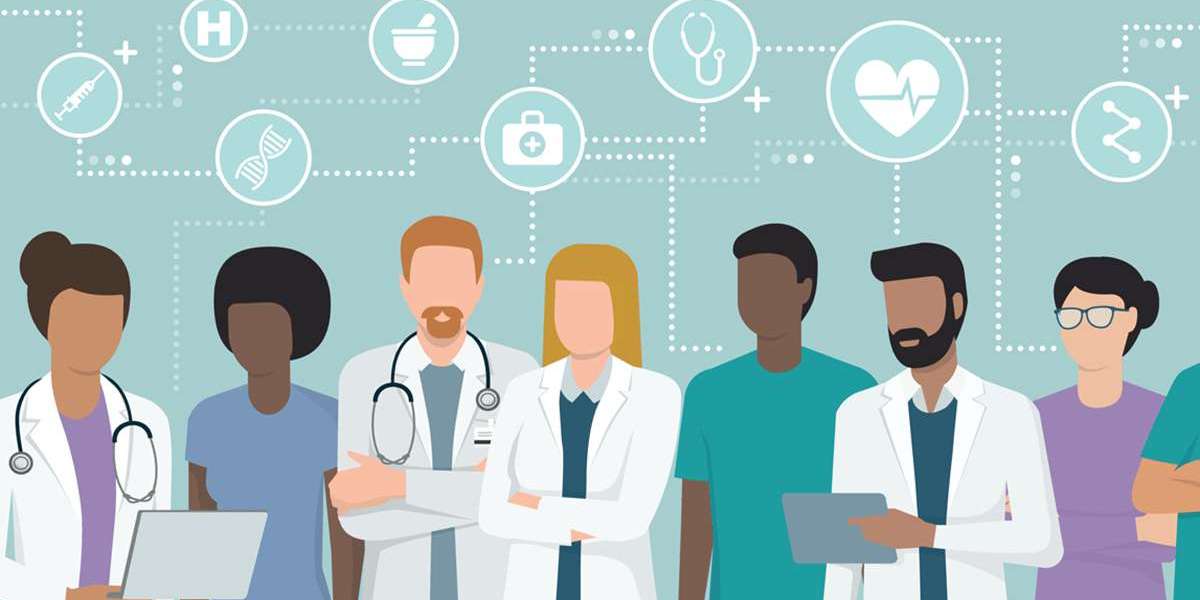Did you know that poor communication in healthcare contributes to nearly 15% of avoidable patient harm in the UK? Collaborative care, supported by effective teamwork, has been proven to reduce errors and significantly improve patient outcomes.
So, how do you master effective communication? It starts with building key skills like active listening, clear messaging, and teamwork—skills that are essential for success in work, school, and beyond.
In this blog, we’ll explore the importance of Interprofessional Education (IPE) in health and social care courses, why effective communication matters, and how training future professionals to collaborate across disciplines leads to better patient care and career success.
What Is Interprofessional Education (IPE)?
Interprofessional Education (IPE) is about teamwork. Plain and simple. It’s where students—nurses, doctors, social workers, allied health professionals—learn together. They learn how to work side by side, respect each other’s roles, and combine their skills for one purpose: better patient care.
Think about it. Healthcare isn’t a one-person job. A nurse can’t do it all. Neither can a doctor or a social worker. They’ve got to collaborate—share knowledge, solve problems, and communicate effectively. IPE teaches that. It gives students a chance to practice working as a team, before they’re in the real world where mistakes cost more than grades.
In health and social care settings, this kind of training matters. It breaks down silos. It helps professionals see each other not just as “roles” but as partners. And when everyone works together? Patients get better care. Faster, safer, and more effective. Isn’t that the goal?
Why Is Interprofessional Education Important?
So, why all the buzz about Interprofessional Education? Honestly, it’s a game-changer. Here’s why it matters:
Enhances Teamwork
Ever felt stuck working in your own little bubble? IPE bursts those bubbles. It breaks down silos by promoting shared learning and cooperation. Students from different disciplines—nurses, doctors, social workers—learn together. They start seeing the bigger picture, understanding how each role fits into patient care. Teamwork isn't just a nice-to-have; it's essential.
Improves Patient Outcomes
At the end of the day, it’s all about the patient, isn't it? Effective collaboration reduces errors, improves safety, and delivers better care. When professionals communicate and work seamlessly, patients reap the benefits. Fewer mistakes mean better outcomes. Simple as that.
Strengthens Communication Skills
Communication can make or break a team. Through IPE, professionals learn to communicate clearly, ensuring everyone’s on the same page. They pick up on the jargon of other disciplines, learn to convey information effectively, and listen—really listen. It's about making sure nothing falls through the cracks.
Addresses Complex Needs
Let's face it—patients often have complex needs that one profession alone can't address. IPE equips teams to handle diverse and multifaceted cases. With input from multiple disciplines, they're better prepared to create comprehensive care plans. It's like having all the pieces of a puzzle finally come together.
The Benefits of IPE in Health and Social Care Courses
Prepares Students for Real-World Challenges
Healthcare isn’t a solo act. The real world demands teamwork, and Interprofessional Education (IPE) gives students exactly that. By working alongside peers from other disciplines, they learn how to solve problems together, adapt, and communicate effectively. These skills? Absolutely essential for professional practice.
Builds Mutual Respect and Understanding
Ever heard someone say, “That’s not my job”? IPE helps change that mindset. It teaches students to value each professional’s role and expertise. A nurse understands what a social worker brings to the table. A doctor sees how allied health professionals make care more complete. Mutual respect builds stronger teams and stronger teams deliver better care.
Improves Health Outcomes
At the heart of it all is the patient. When professionals collaborate, care becomes holistic. There are fewer gaps, fewer errors, and far better results. Patients get the kind of care they deserve—seamless, well-rounded, and effective. Communities benefit, too, with healthier individuals and reduced strain on healthcare systems.
If you’re looking to build these skills and become a confident, collaborative professional, the Health and Social Care Level 3 Diploma offers the perfect foundation. With a focus on teamwork and knowledge, this course prepares you to make a meaningful impact in your career and the lives of others.
How to Integrate Interprofessional Education into Courses
So, how do you make Interprofessional Education (IPE) work? It’s not about reinventing the wheel, but about practical, simple steps that bring students together. Here’s how:
Simulated Learning Scenarios
Imagine students tackling real-world problems together. Case studies, role-plays, and mock emergencies let them practice teamwork in a low-pressure environment. They learn by doing, figuring out how to communicate, solve problems, and support one another. It’s like a dress rehearsal for their future careers.
Shared Modules
Why keep students in separate silos? Bring them into the same classroom. Nurses, social workers, and allied health students can take shared modules that show them how their roles connect.
Clinical Placements
Nothing beats real-life experience. Collaborative clinical placements throw students into actual care settings, working side by side to handle patient cases. They see what teamwork looks like—messy, challenging, but ultimately rewarding. It’s a glimpse of what they’ll face when the stakes are high.
Technology Integration
And let’s not forget tech. Virtual simulations, group projects, webinars are tools that make IPE flexible and modern. Students can connect remotely, tackle shared problems, and learn in ways that fit their schedules. It’s teamwork, upgraded.
Integrating IPE doesn’t have to be complicated. It’s about creating spaces where students can learn together, challenge each other, and prepare for the real world. Because healthcare isn’t about individuals but about the team. Always.
Challenges and Solutions
Implementing Interprofessional Education (IPE) isn’t without its hurdles. But the good news is every challenge has a solution.
Challenges
Scheduling conflicts are a big one. Different disciplines often have packed timetables, making it tough to bring everyone together. Add to that resource limitations—space, staff, and funding—and it’s easy to see why IPE can feel like a logistical nightmare. And then there are discipline silos, where each profession sticks to its own corner, reluctant to collaborate.
Solutions
Flexible learning models can help. Use asynchronous modules or virtual simulations so students can learn together—even if they’re not in the same room. Digital tools like webinars and collaborative platforms make IPE more accessible, breaking down logistical barriers. And, of course, institutional support is crucial. Leadership needs to prioritise IPE, investing in resources and creating a culture where teamwork across disciplines is the norm.
IPE isn’t without its bumps, but with the right strategies, it can become a seamless part of health and social care education. And the payoff? It’s worth every effort.
Conclusion
Interprofessional Education (IPE) is a vital step toward building stronger, more collaborative healthcare teams. By breaking silos, fostering respect, and preparing students for real-world challenges, IPE ensures patients receive the seamless, patient-centred care they deserve.
Yes, there are challenges. But with flexible models, digital tools, and institutional support, these barriers can be overcome. The result? Health and social care professionals who understand each other’s roles, communicate effectively, and deliver better outcomes.
It’s clear: integrating IPE into education isn’t just important—it’s essential. Because at the heart of healthcare, it’s always about the team. And the patient. Always.
FAQ
What is the importance of interprofessional collaboration in health care?
Interprofessional collaboration improves communication, fosters teamwork, and ensures holistic, patient-centred care. It reduces errors, enhances safety, and leads to better health outcomes by addressing complex needs with a unified approach.
What is IPE and why is it important?
Interprofessional Education (IPE) trains students from different healthcare disciplines to work together effectively. It’s crucial for fostering teamwork, respect, and shared decision-making, ensuring high-quality, collaborative patient care.
What are the principles of IPE?
The principles of IPE include mutual respect, collaboration, shared goals, and integrated learning. These ensure teamwork, effective communication, and patient-centred outcomes in healthcare.
What are the four domains of interprofessional education?
The four domains are Values and Ethics, Roles and Responsibilities, Interprofessional Communication, and Teams and Teamwork, all essential for building collaborative, patient-focused care teams.








